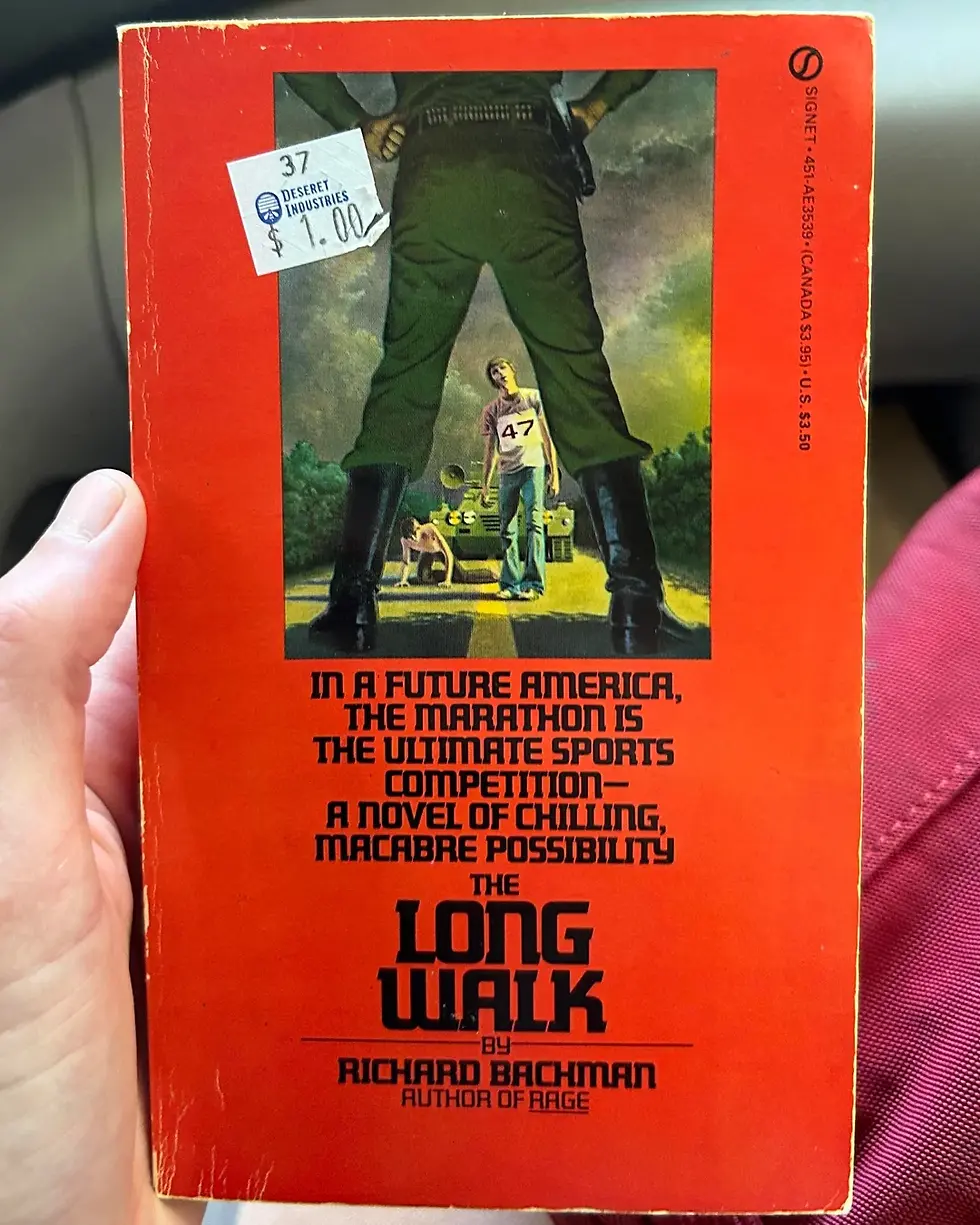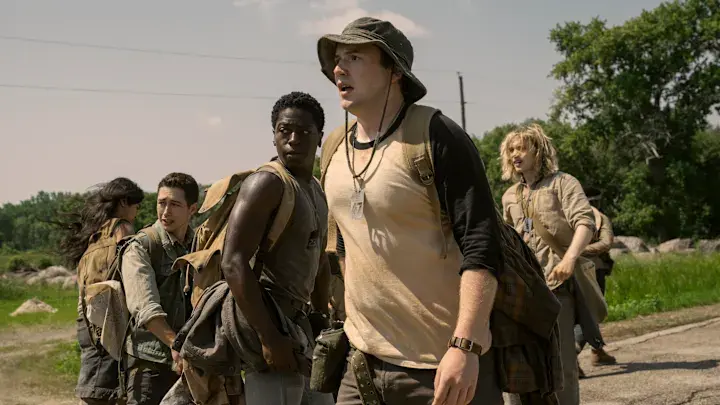"The Long Walk": A Masterpiece of Dystopian Horror and Its Cinematic Adaptation
- Warrheid Ubuntu
- 4 days ago
- 4 min read
The Legacy of a Dark Classic
Stephen King's "The Long Walk", originally published under the pseudonym Richard Bachman in 1979, remains one of the most haunting and prescient dystopian novels ever written. Completed by King during his college years in the late 1960s, the novel explores themes of authoritarianism, societal voyeurism, and human endurance through the grim premise of a deadly walking competition. With the 2025 film adaptation directed by Francis Lawrence ("The Hunger Games" series), this classic has finally reached the screen, offering a compelling reinterpretation that honors the source material while making bold narrative choices. This review celebrates the novel's enduring power and examines how the film translates its bleak brilliance to cinema.
---
The Novel: A Psychological Masterpiece

The Premise and Its Brutal Simplicity
"The Long Walk" is set in an alternate-history America under military rule. Each year, 100 teenage boys participate in a voluntary walking contest where they must maintain a pace of at least 4 mph. Those who slow down receive warnings; after three warnings, they are executed by soldiers. The last boy standing wins "The Prize"—anything he desires for life. The story follows Ray Garraty, a 16-year-old from Maine, as he navigates physical agony, psychological torment, and fleeting camaraderie with other walkers.
Themes of Oppression and Voyeurism
King’s novel is a scathing critique of systemic oppression and societal complacency. Written during the Vietnam War, it mirrors the senseless sacrifice of young lives for ideological ends. The Long Walk ritual serves as a televised spectacle to distract and control a impoverished populace, foreshadowing modern reality TV and social media obsession. The boys’ participation—often driven by economic despair—highlights the brutality of a system that preys on the vulnerable.
Character Depth and Psychological Horror
The novel excels in its intimate portrayal of the walkers’ psyches. Garraty’s internal monologue reveals his desperation, nostalgia, and deteriorating sanity, while supporting characters like the cynical Peter McVries and the enigmatic Stebbins embody different responses to existential dread. King’s exploration of adolescent masculinity—its ideals, fears, and violent contradictions—adds layers to the horror. McVries’ backstory, for instance, involves a traumatic relationship that underscores the novel’s themes of guilt and self-destruction.
The Ending: Ambiguity and Nihilism
The book’s conclusion is famously bleak. After Stebbins (revealed as the Major’s illegitimate son) dies of exhaustion, Garraty wins but descends into madness, hallucinating a dark figure that compels him to walk endlessly. This ending emphasizes the futility of the competition: even victory consumes the winner. Unlike typical dystopian narratives, there is no rebellion or redemption—only the crushing weight of a dehumanizing system.
---
The Film Adaptation: Faithful Yet Innovative

Key Changes and Their Impact
Director Francis Lawrence and screenwriter J.T. Mollner make strategic alterations to streamline the story for modern audiences:

- Pacing and Scale: The walking speed is reduced to 3 mph for realism, and the number of contestants is halved to 50.
- Character Motivations: Garraty (Cooper Hoffman) seeks revenge against the Major (Mark Hamill), who executed his father for dissent. This adds personal stakes absent in the novel, where Garraty’s motives are vague.
- McVries’ Redemption: David Jonsson’s McVries is softened into a charismatic, compassionate leader—a departure from the novel’s darker portrayal, where he admits to past violence against a girlfriend.
- The Ending: The film subverts the novel by having Garraty sacrifice himself for McVries, who then kills the Major and walks away, hinting at rebellion rather than despair.
Visual and Emotional Power
The film’s minimalist setting—endless roads, stark landscapes—amplifies the claustrophobia and exhaustion of the Walk. Lawrence uses unflinching violence to underscore the brutality of the system, but balances it with moments of tenderness among the walkers, particularly the bond between Garraty and McVries. The decision to omit crowds (unlike the novel) creates an eerie isolation, emphasizing the walkers’ abandonment by society.
Performance Highlights
Cooper Hoffman captures Garraty’s vulnerability and determination, embodying the character’s physical and emotional collapse.

David Jonsson steals the film as McVries, infusing the role with wit and warmth that makes his survival feel like a hard-won hope.

Mark Hamill’s Major is a chilling embodiment of authoritarian hypocrisy, lurking in the background like a puppet master.

---
Why the Novel Remains Timeless
"The Long Walk" predicted the rise of reality TV, exploitative entertainment, and economic despair decades before these trends dominated culture. Its unflinching examination of human endurance under oppression resonates deeply in an era of social inequality and political polarization. King’s prose—raw, introspective, and relentlessly tense—creates a visceral experience that lingers long after the last page. While the film offers a more optimistic conclusion, the novel’s bleakness forces readers to confront uncomfortable truths about complicity and sacrifice.
---
Two Masterpieces, One Vision

Stephen King’s "The Long Walk" is a landmark of dystopian fiction, whose influence echoes in works like "The Hunger Games" and "Squid Game". The 2025 adaptation succeeds not by replicating the novel exactly, but by reinterpreting its core themes for a new generation. Both versions celebrate the resilience of humanity in the face of unimaginable cruelty—whether through Garraty’s tragic descent or McVries’ defiant survival. For fans of psychological horror and social commentary, both the novel and the film are essential experiences.





Comments